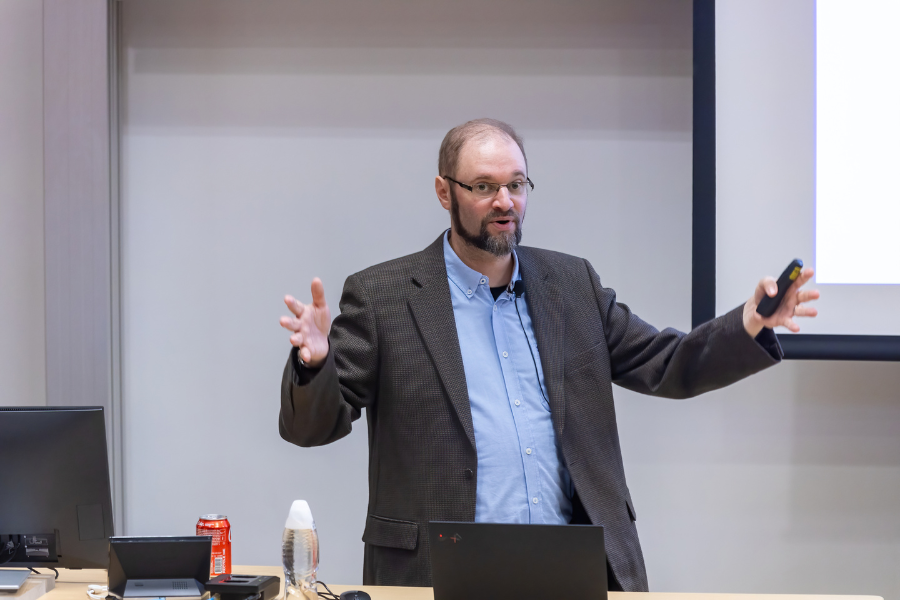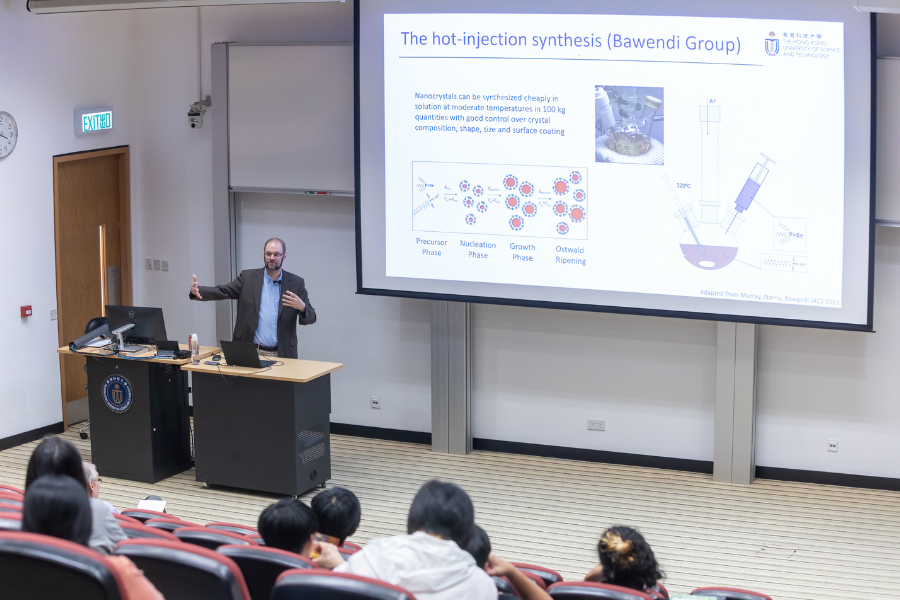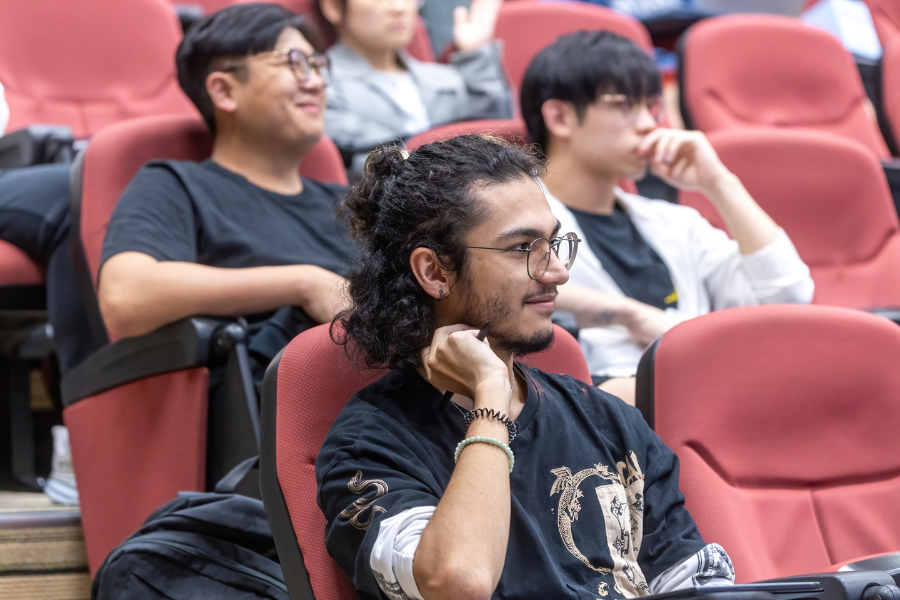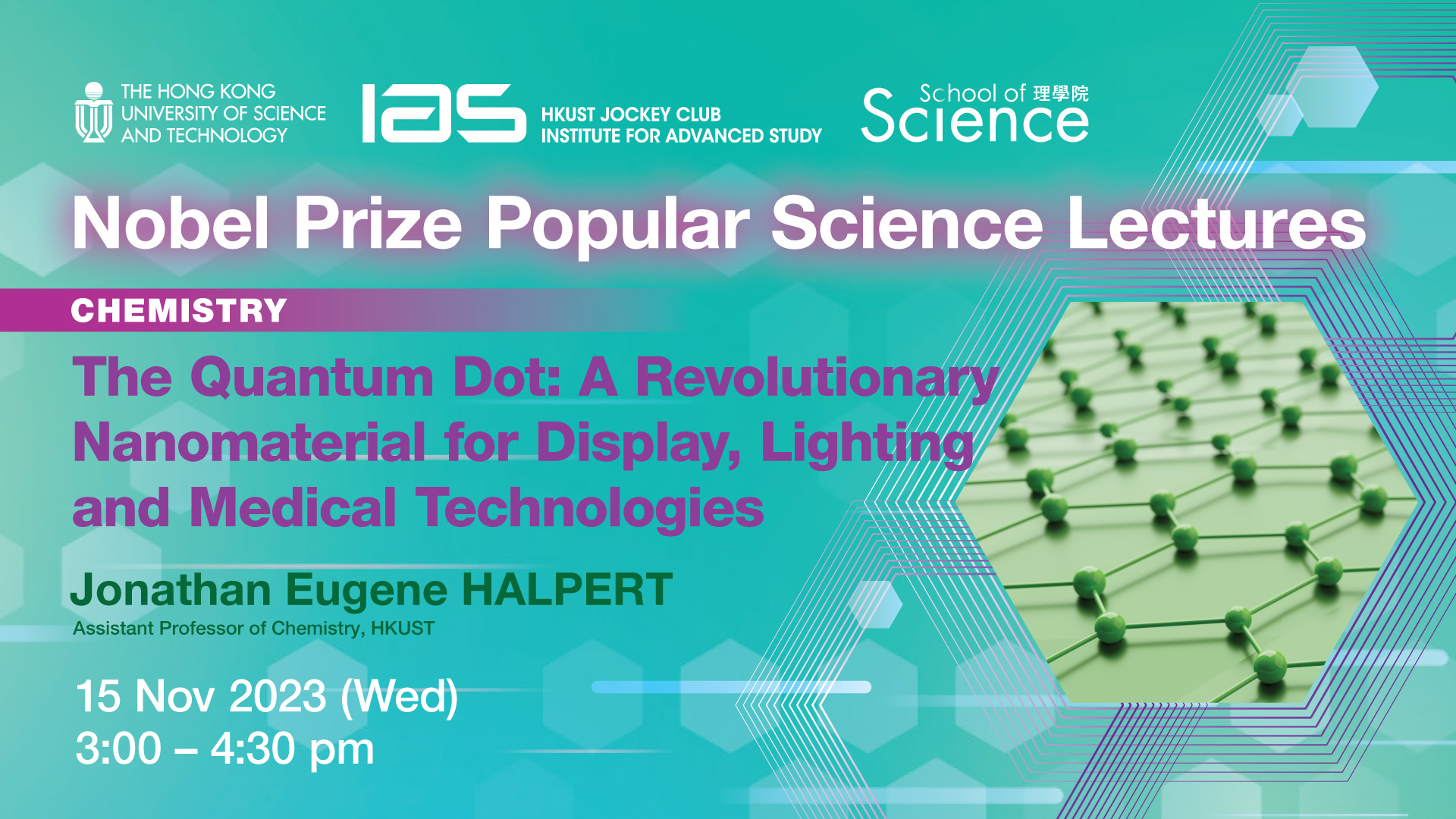The Quantum Dot: A Revolutionary Nanomaterial for Display, Lighting and Medical Technologies - 2023 Nobel Prize in Chemistry
Abstract
The nano revolution began in the 1970's and '80s, however, it took many decades before the unique properties of nanomaterials could be controlled enough for commercial applications. One of the key predictions of quantum mechanics in nano-sized objects was the size dependence of the band gap in spherical semiconductor nanocrystals called quantum dots. In the lecture, the speaker will explore the Nobel Prize in Chemistry 2023 winning discoveries of Louis E. BRUS and Alexei I. EKIMOV, of the size-dependent absorption in small semiconductor particles, and the later innovations of Moungi BAWENDI, who was the first to synthesize high-quality, monodisperse samples of these materials, making it possible to use them in practical applications. Although quantum dots can be used in a wide range of biological and optoelectronic applications, the speaker will dive deeply into the best commercial applications of quantum dots: displays, lighting and medical technologies. In particular, the speaker will highlight the long path from discovery to theory, to chemical and electrical engineering of the quantum dots for QD-TV screens, as a way to understand the long engineering pathway needed to bring these unique nanomaterials to the world.
About the Speaker
Prof. Jonathan Eugene HALPERT is an Assistant Professor in the Department of Chemistry at The Hong Kong University of Science & Technology (HKUST). His work to date has focused on synthesizing novel nanomaterials in order to build thin film devices for optical and electronic applications. He started his career as an undergraduate majoring in ACS Chemistry at Tufts University with a minor in mathematics. He did his Ph.D. at the Massachusetts Institute of Technology where he worked in the group of Prof. Moungi Bawendi, investigating methods of designing and synthesizing semiconductor nanocrystal (NC) heterostructures for use in nanocrystal optoelectronic devices, mainly quantum dot light emitting devices (QD-LEDs). He graduated with his PhD in Physical Chemistry with a thesis entitled “Design and Synthesis of Semiconductor Nanocrystals for Optoelectronic Applications”. In 2010 Prof. Halpert received a Fellowship for Visiting Young Scientists to do postdoctoral work in the group of Prof. Dan WANG in the nanostructured materials division of the Institute for Process Engineering (IPE) at the Chinese Academy of Sciences in Beijing. After this, he worked for two years as a postdoctoral researcher for Prof. Neil GREENHAM in the Optoelectronics Group in the Cavendish Laboratory at the University of Cambridge. He fabricated solar cells from CIS nanocrystals to understand these devices' excited state and charge dynamics. In October of 2013, he left Cambridge and started as a lecturer at the Victoria University of Wellington (VUW) where he taught and performed research as a Rutherford Discovery Fellow (2014-2017) and Associate Investigator (2014-2016) in the MacDiarmid Institute for Advanced Materials & Nanotechnology. In 2016 he was made a Senior Lecturer in SCPS and a Principal Investigator (2016-2017) in the MacDiarmid Institute. In 2017 he moved his group to HKUST in Hong Kong.
For Attendees' Attention
Seating is on a first come, first served basis.







